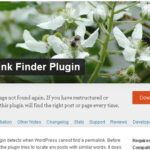Click here to buy secure, speedy, and reliable Web hosting, Cloud hosting, Agency hosting, VPS hosting, Website builder, Business email, Reach email marketing at 20% discount from our Gold Partner Hostinger You can also read 12 Top Reasons to Choose Hostinger’s Best Web Hosting
If you’ve ever typed “what is mu plugins in WordPress” into Google, you’re not alone. Many site owners and developers come across this question when they need a way to run critical code that can’t be turned off from the WordPress dashboard. Ordinary plugins can be deactivated by accident, causing security issues or breaking site features. That’s where MU (must-use) plugins come in — a special type of plugin that WordPress loads automatically on every page, keeping your most important functionality always active.
As you can see, Hostinger offers a lot of benefits for website owners. With affordable pricing, top-notch performance, and advanced security features, they are a fantastic choice for hosting your website.
What are mu-plugins (the essentials)
Must-use (mu) plugins are special PHP files placed in wp-content/mu-plugins. Any PHP file placed in that directory is automatically loaded by WordPress on every request and cannot be deactivated from the admin UI — you must remove the file to stop it. They are loaded before normal plugins, so hooks and filters they register are already in place for regular plugins to use.
Two technical details that matter in practice:
They load early and always. Mu-plugins are included on every page load before the standard plugin loader. That makes them ideal for early hooks (e.g., authentication, VIP host integrations).
Default location and override: By default WordPress looks in
wp-content/mu-plugins; you can change this by definingWPMU_PLUGIN_DIR(andWPMU_PLUGIN_URL) inwp-config.php. The core function that reads mu-plugins references this default.

How mu-plugins differ from regular and drop-in plugins
| Feature | Regular plugin (/wp-content/plugins) | Must-use (/wp-content/mu-plugins) | Drop-in (e.g., advanced-cache.php) |
|---|---|---|---|
| Activate/Deactivate via admin | ✅ | ❌ (must remove file) | ❌ |
| Loaded before regular plugins | No | Yes | Depends |
| Plugin update notifications | Yes | No (manual updates) | No |
| Subdirectory files auto-loaded | Yes (plugin folder) | No — only root files executed | N/A |
Key practical consequences: activation hooks do not run for mu-plugins (so installation code expecting register_activation_hook() won’t execute), and WordPress doesn’t automatically descend into subfolders inside mu-plugins — you often need a tiny loader file in the root that includes other files or a small autoloader.
When to use mu-plugins (real-world use cases)
Use mu-plugins when you need code that must not be switched off or when the code must run early. Common scenarios:
Host-level features: Managed hosts install mu-plugins to add environment integrations (monitoring, custom cron handling, performance hooks). This ensures features run even if a site admin is blocked.
Multisite network policies: On a multisite install, mu-plugins can enforce network-wide behavior (mandatory security headers, default role restrictions).
Critical small helpers: Force-on two-factor enforcement, custom login behavior, or error-reporting bootstrap that should survive theme/plugin churn. Click here to learn more about Top 5 Free Divi Child Theme Generators for WordPress
Tooling and autoload proxies: A single mu-plugin can act as a tiny loader to include a Composer autoloader, making packaged code available site-wide.
When not to use them: heavy feature plugins that expect activation hooks, themes that should manage their own features, or anything that benefits from the normal update/installation UX. If you want users to be able to toggle a feature, use a regular plugin.
You can click here to check out 100s of responsive wordpress themes to design your responsive website.
Practical pattern — the mu-plugin autoloader (a safe, maintainable approach)
Because WordPress doesn’t automatically load files in subfolders, the best pattern for nontrivial mu-plugins is a loader file plus an organized directory (which can be managed with Composer or deployment script).
Step 1 — Add a root loader (wp-content/mu-plugins/zz-autoloader.php):
<?php
// zz-autoloader.php (mu-plugins root)
if ( file_exists( WP_CONTENT_DIR . ‘/mu-plugins/vendor/autoload.php’ ) ) {
require WP_CONTENT_DIR . ‘/mu-plugins/vendor/autoload.php’;
}
require_once WP_CONTENT_DIR . ‘/mu-plugins/my-mu-bootstrap.php’;
Step 2 — Put code under /mu-plugins/src/ and use Composer (or your deployment): this keeps mu-plugins maintainable and testable.
Why this helps: you keep a single, tiny always-on file at the mu root (so WP will load it), while the heavier code lives in versioned folders you manage outside the web UI. This pattern allows you to ship updates from CI and still meet the “must-use” guarantee.
Mini case study: enforcing SSO and logging across a multisite network
Problem: An education platform runs WordPress Multisite for 200 schools. Each school could accidentally disable a plugin and lose SSO access.
Solution: The platform installs a mu-plugin that integrates the global SSO provider and sets authentication hooks early. Because the mu-plugin loads before regular plugins and cannot be disabled via the admin, SSO is always enforced. The team uses an autoloader pattern so the core SSO client is updated through their CI/CD pipeline (deploying into the mu-plugins folder), and they keep initialization idempotent because activation hooks aren’t available.
Outcome: Zero accidental SSO misconfigurations after deployment; consistent access control across the network.
6 Simple Ways to Fix the Error Establishing a Database Connection in WordPress
Risks and caveats (what can go wrong and how to mitigate it)
No activation hooks. If your plugin relies on
register_activation_hook()(for DB schema, rewrite rules), you must run install-time logic manually (via a separate CLI script or admin action). Mitigation: provide a CLI command (WP-CLI) or an admin notice with a one-time setup procedure.No auto-updates or WP update screen. Mu-plugins won’t appear in normal update flows. Mitigation: manage mu-plugins via Git/CI or Composer and push safe releases from a staging pipeline.
Security risk if unmanaged. A bad mu-plugin runs everywhere and can crash a site. Mitigation: code review, static analysis, and restrict file write access to deploy users only.
WordPress won’t load subfolders by default. Always include a root loader or follow the loader pattern.
Deployment checklist — how to ship mu-plugins safely
Design as “always on” — assume the code will run for every request and every user.
Keep mu root files tiny — use a loader, not a monolith.
Use CI/CD to deploy mu-plugins (no manual edits on production).
Add a CLI installer (WP-CLI) for one-time tasks that activation hooks would normally do.
Limit file permissions so only your deploy user can drop files into
mu-plugins.Test on staging multisite to ensure there are no unexpected hook-order side effects.
Document rollback steps (remove file vs. restore previous commit).
Key Takeaways
Mu-plugins are “must-use” — files in
wp-content/mu-pluginsare auto-loaded and cannot be disabled via the admin.They run before regular plugins, making them ideal for early, mandatory logic such as host integrations or network policies.
No activation hooks or auto-updates — plan install scripts and use CI/CD for safe updates.
Use a root autoloader to include structured code from subfolders (WordPress won’t auto-descend into subdirectories).
Treat mu-plugins as high-trust assets: code review, limited write access, and staging tests are essential.
FAQs (People Also Ask)
Q: Can I put a normal plugin folder inside mu-plugins?
A: WordPress only auto-loads PHP files in the mu-plugins root by default. If you copy a plugin folder into mu-plugins, its main file won’t be automatically required. Use a root loader file that includes the plugin’s main file or use a composer/autoload approach.
Q: Will mu-plugins work on multisite?
A: Yes — mu-plugins are especially useful in multisite because they apply to every site in the network and cannot be disabled per-site.
Q: How do I update a mu-plugin?
A: Manually: replace the file via SFTP/CI. Best practice is to deploy via your CI/CD pipeline or Composer so changes are versioned and testable.
Q: Can mu-plugins break my site?
A: Yes — because they run on every request and can’t be turned off from the UI, a bad mu-plugin can take down the whole install. Lock down file writes, review code, and test on staging.
How to Create AI-Generated Posts in WordPress Using an AI Agent (Step-by-Step Guide)
Conclusion
If you asked what are mu-plugins in wordpress to find a way to guarantee essential code runs no matter what, mu-plugins are the right tool — when used carefully. They give hosts and developers a reliable hook to enforce security, performance, and network-wide behaviour, but they also change the maintenance model: no activation hooks, no WP update UX, and a need for disciplined deployment. Use the loader pattern, automate releases, and keep mu-plugin logic minimal and audited.
Try the autoloader pattern on a staging site first. If you manage a multisite or work with a managed host, move host-level code into a mu-plugin and document your CI/CD path. Subscribe to SmashingApps for more WordPress patterns and hands-on examples.
Resources:
WordPress Developer Handbook — Must-Use Plugins. WordPress Developer Resources
WordPress Developer Reference —
wp_get_mu_plugins()(notes on default directory and constants). WordPress Developer Resources
Now loading...





